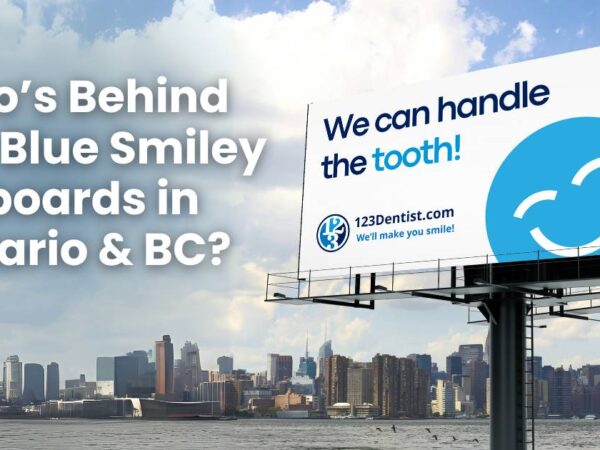How Effective Are Whitening Toothpastes?
Whitening toothpastes are effective for removing surface stains from the teeth, but they can’t change the natural tooth colour. Those who have noticeable stains from soda, coffee, or cigarettes can expect visible changes with regular use of a quality whitening toothpaste.
4 minute read

Whitening toothpastes are effective for removing surface stains from the teeth, but they can’t change the natural tooth colour. Those who have noticeable stains from soda, coffee, or cigarettes can expect visible changes with regular use of a quality whitening toothpaste. However, if your discoloration runs deeper, there are other whitening products that can better bring about the changes you’re after.
Understanding the active ingredients used for tooth whitening as well as the differences between various products will help you choose the treatment that best meets your needs.
Immediate Appearance of Whitening
If you’re dealing with day-to-day surface stains from yellowing beverages or other lifestyle habits, a whitening toothpaste can help you scrub away this discoloration before it becomes a permanent part of your smile. However, this typically takes between two and six weeks of regular use. If you want a whiter appearance with the first application, you can achieve this through something of an optical illusion. Look for a whitening toothpaste that contains blue covarine. This chemical diminishes the yellow appearance on the surface of the tooth. The result is immediately perceptible, though not as long-lasting as other methods of tooth whitening. It’s best to combine the optical properties of blue covarine with other approaches to tooth-whitening.
Long-Term Whitening Results
Whitening toothpastes are designed for regular application at least twice a day. For the best results, users must brush daily with these products for several weeks. Products that don’t contain blue covarine can still yield impressive results. However, it’s important for users to understand that the whitening isn’t usually visible after the very first brushing. Whitening toothpastes achieve long-term results through a combination of abrasives that polish the teeth and chemicals that break down stains. Common abrasives found in whitening toothpastes include:
- Hydrated aluminum oxide
- Calcium carbonate
- Magnesium carbonate
These toothpastes may also contain carbamide peroxide or hydrogen peroxide which help whiten teeth. Carbamide peroxide works faster, but these ingredients bring about the same overall degree of colour change over a period of two weeks.
Important Product Considerations
When you’re shopping for a whitening toothpaste, it’s important to make sure you select a safe product. Look for the American Dental Association (ADA) Seal of Acceptance. Products that sport this seal have undergone a thorough evaluation, demonstrating both their safety and efficacy. Participation in the ADA Seal program is voluntary but is an excellent demonstration of the manufacturer’s commitment to quality and reliability. While the ADA Seal of Acceptance does identify products that are safer, it’s important to understand that no bleaching or whitening product is without risks. The most common issue with whitening toothpastes and other similar products is mild irritation of the gums and mouth. You may also experience increased tooth sensitivity. It’s important to note that whitening toothpastes rely heavily on abrasives for their results, and while these abrasives can effectively scrub away surface stains, they may also remove some of the tooth enamel. As the enamel wears away, you will see more of the dentin beneath, which is often discoloured. In the manufacturer’s clinical trial, Arm & Hammer Advanced Whitening whitened teeth for 39 percent of users. However, 25 percent were left with darker teeth, demonstrating the potential risks inherent in these products.
Over-the-Counter Bleaching Products
Whitening toothpastes are not the same as over-the-counter tooth-whitening bleaches. Though many toothpastes contain a bleaching ingredient, it’s washed away fairly quickly in this form. For the best results, bleaches must stay in contact with the teeth for an extended period, as they do with a whitening strip or tray. If you want to go beyond removing surface stains on the teeth and focus instead on lightening the overall color, a tooth bleaching product or kit is a more effective choice than a toothpaste. These products usually require regular applications for two to four weeks.
Professional Whitening Alternatives
The most effective way to whiten your teeth is to speak with your dentist about professionally applied products. These have a higher concentration of the active bleaching ingredient and produce more noticeable results. While an over-the-counter bleaching kit will typically contain 10 percent carbamide peroxide, a professional application can have a hydrogen peroxide concentration ranging from 25 to 40 percent. A protective gel or other agent is used on the gums to prevent irritation with these strong treatments. Professional tooth whitening treatments are also much quicker than other alternatives. Most dentists will complete this treatment in about an hour, saving you weeks of repetitive applications. If you’re looking for whiter teeth, whitening toothpastes may prove to be an effective solution when used correctly to treat surface stains. However, if you want to get beneath the enamel and achieve a deeper and longer-lasting white, you should consider alternative products. Ultimately, speaking with a dentist is the best way to address any concerns regarding the colour of your teeth and find a satisfying solution.


